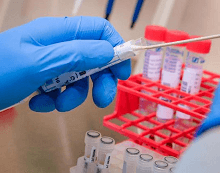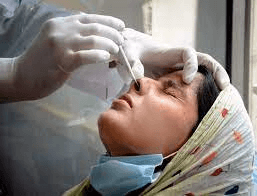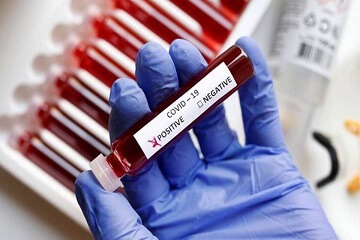RT-PCR - Reverse Transcription Polymerase Chain Reaction
The covid-19 pandemic has affected the lives of people and brought many changes. These include the economic crisis to the shortage of healthcare services. Hence the solutions to control the rise of covid-19 cases are a must. Testing techniques and preventive measures play a major role in reducing covid-19 cases in the country. One such testing method is RT-PCR Reverse Transcription Polymerase Chain Reaction. It is one of the most accurate techniques for the detection of the virus. It is a real-time test; therefore, it does not consume much time for the detection of the virus. Additionally, it only detects the covid-19 virus. Hence cannot be used for other diseases. 
What is RT-PCR?RT-PCR is a real-time technique used to detect a specific genetic material. It is a nuclear-derived method that is useful to detect disease in pathogens and viruses. RT-PCR is a highly sensitive technique that is specific to the covid-19 disease. Conventionally, a different technique was used to conduct the test, which used radioactive isotope markers. Nowadays, a more evolved technique is used, which uses special markers like fluorescent dyes. The new method provides immediate results while the process is still in progress. However, the conventional test takes more time, and the result can be obtained only when the process terminates. Today, real-time RT-PCR is widely used methods of testing or detecting the covid-19 infection. It has helped in the testing of diseases such as the Ebola virus and Zika virus. Many countries use real-time RT-PCR for the detection of other diseases. However, some countries still need to adapt this method for faster and efficient testing, eventually, reducing the risk of the infection. What is a virus?A virus is a package of genetic material which can be either DNA (Deoxyribonucleic Acid) or RNA (Ribonucleic Acid). This package of genetic material is surrounded by an envelope. What is Genetic Material?Genetic material is a substance that is inherited by offspring and stores all the necessary information for the growth and development of that organism. It generally contains information that is specific to a particular organism. This information is required to direct the protein synthesis of the organism. Any organism is built based on this data, and it also acts as the blueprint for copying. An example of the genetic material is deoxyribonucleic acid (DNA) and ribonucleic acid (RNA). These are explained below - DNA (Deoxyribonucleic Acid) - DNA is a molecule that holds the information necessary for reproducing the offspring of any animal. It is a two-stranded molecule that stores the characteristics of any organism. It is also known to store the genetic code or blueprint of an organism. RNA (Ribonucleic Acid) - RNA transmits the information to proteins that are necessary for the synthesis and development of an organism. These are essential for the organism to be alive and for its overall growth. RNA is a single-stranded molecule; copying and transcribing are also some of its functions. Viruses such as SARS-CoV-2, which is the cause of covid-19 disease, have only RNA structure as their genetic material. Thus, they use RNA to program the cell in such a way that they start producing more viruses. Eventually, the cell becomes a factory for virus production and takes control of the cell. In real-time RT-PCR, it is required to convert the RNA into DNA to detect the coronavirus in the body. This process is known as reverse transcription. It is essential because RNA cannot be copied, unlike DNA. Hence, in real-time RT-PCR, RNA is transcribed into DNA, and this is the most important step of detecting viruses. Scientists also amplify the DNA to have a large amount to detect the presence of viruses. However, only the specific or targeted sections of the transcribed DNA are used for amplification. DNA amplification provides the size required for effective detection of the viruses present. It results in a more accurate result of the test. Working of real-time RT-PCR and Detection of Viruses

Steps to follow after an RT-PCR TestFor the person who tests positive in RT-PCR - The healthcare provider will guide the person and prescribe appropriate medicines and the necessary measures that must be followed after testing positive. These are generally provided to limit the spread of infections to other healthy people. For the person who tests negative in RT-PCR - A negative result of an RT-PCR test assures that the person did not have a covid-19 infection at the time of testing. However, if someone has symptoms 3-4 days after the RT-PCR test,they must take the RT-PCR test again. After which, the person may consult a doctor according to the results of the test. Reasons to use RT-PCR
Other Covid-19 Tests
The PCR TechniqueThe full form of PCR is Polymerase Chain Reaction. It is one of the most popular techniques used to detect the spread of diseases caused by pathogens. It has played a vital role in detecting and controlling diseases like the Ebola virus and swine flu. Similarities and Differences between PCR and RT-PCRSimilarities - Both PCR and RT-PCR use the same technique to identify the disease except the last step of RT-PCR. Both the methods are real-time and reliable to detect the infection caused by diseases. The results of both tests can be obtained immediately. Differences - RT-PCR has an additional step in the detection technique. This step is reverse transcription of RNA used for amplification. Hence the major difference is that the PCR is used for detecting infections caused by pathogens that already have DNA. However, RT-PCR is the technique that is used for pathogens containing RNA. Hence, it is required to transcribe the RNA into DNA in RT-PCR for amplification. Advantages and Disadvantages of RT-PCRAdvantages
Disadvantages
Results of RT-PCR Test and Related IssuesThe results of the RT-PCR test are accurate when compared to the other methods of detecting the infection. It is a real-time test; therefore, it does not consume much time for the detection of a virus. However, there is still a chance of wrong results for certain cases. There are many reasons for the wrong positive or wrong negative results of the RT-PCR test. The most common reason for the negative report of a positive patient is that only upper respiratory tract samples are tested. In order to avoid this error, the lower respiratory tract sample must also be tested at different points of time. The ideal method of testing to obtain the appropriate result is to prefer a CT image with RT-PCR. Both clinical features and RT-PCR are most accurate in determining the result of a person.
Next TopicDSP - Deputy Superintendent of Police
|
 For Videos Join Our Youtube Channel: Join Now
For Videos Join Our Youtube Channel: Join Now
Feedback
- Send your Feedback to [email protected]
Help Others, Please Share










